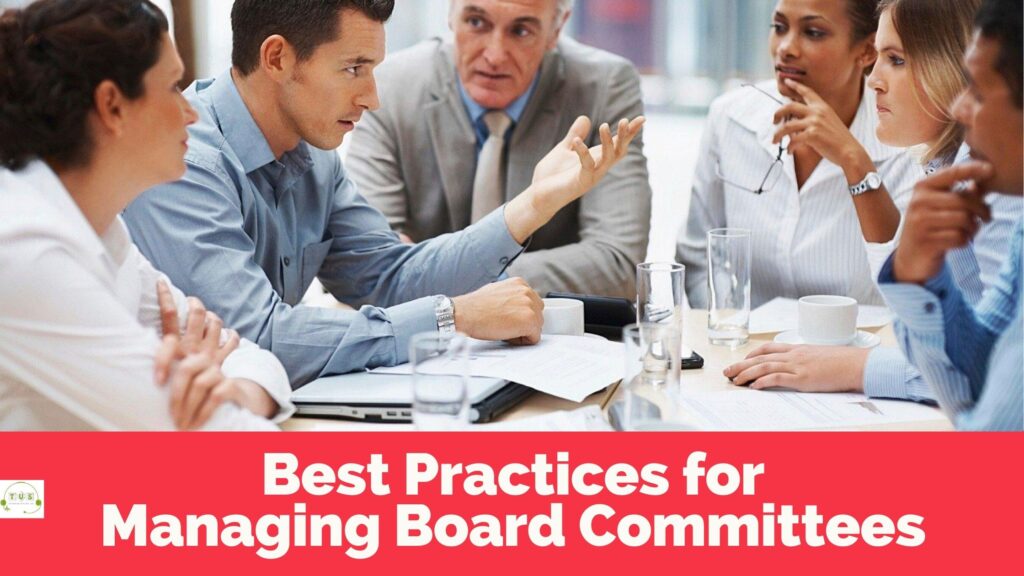
Yes, it is true that the board of directors is challenging to manage but the communities are even harder. The reason is, any business organization could have multiple committees and they might overlap in function. Sometimes it might happen that they may simply fail to communicate effectively with the rest of the board. With effective strategies for managing the board committees, it becomes easier to continue the process of communication and the overall organization. The managing committees do the bulk of the legwork in helping the boards in accomplishing the work. Just like the board structures need to uniquely reflect the needs of a corporation, the board committee structures are also should reflect the strategic plans that the board develops. In the following section of the article, we are going to share some of the best practices for managing the board committees.
Make sure that every committee is important
One of the most important problems is there are too many committees in most of the organizations. Every committee needs to have a material impact on the success of the board. If this doesn’t happen, then it might be good to assign the responsibilities of the committee to one or two members of the board or place them in another committee’s purview. Apart from that, it is important to make sure that every committee is of the appropriate size. If it is too big, then you might be wasting a member’s time that he/she could effectively use in a different committee serving a different purpose.
Ensuring a clear purpose
Every committee should have a distinct purpose. Defining a clear purpose will help the committee in easily fulfilling it. Also, it can be assured that multiple committees do not duplicate their efforts. Set clear policies and procedures. Make sure that all the members are constantly on the same page. There are certain committees that list their mission or policies on top of meeting agendas and then review them at the start of every meeting.
Strong leadership and choosing members properly
It is important that the head of the committee is an active board member who has knowledge of the subject of the committee. Since the boards are limited in size, it is not possible to stack each committee with the strongest leaders of the board. Make sure that the members of the committee respect their leader and follow their head. Also, pay attention that the committee members are not serving too many committees at once. One individual should not be a member of more than two committees, otherwise, their performance and participation will be hampered.
Performing periodical self-evaluations
It is important to conduct periodical self-evaluations. You need to be aware of the strengths, weaknesses, and areas of improvement for future actions. During the evaluation, ask whether the members agree on the committee goals, whether the goals are being met. If the goals are not met, then what is the reason behind it, whether the members are active or not, whether the members agree on most issues or not. You need to make sure that the evaluation remains positive in nature and review the results with the group. Come up with solutions for any problems that arise. If there are no glaring issues then figure out ways to strengthen the group.
Running effective meetings
The meetings should also be like committees, strictly goal-oriented. You need to make sure that the meetings focus on the decisions instead of the updates. Handle the general updates through emails and discussion boards. Make sure that there is a clear agenda and then leave a short period of time at the end of the meeting for discussion items that arise last minute. You need to be strategic about the frequency. If most of the meeting time is spent catching up, then it is not going to be effective. Keep the meetings short and frequent and ensure something fruitful is achieved at the end of the meeting.
Communicating effectively with the rest of the board
You have to share items that actively affect the goals of the board or it will have an impact on other committees. It is not necessary to communicate with the rest of the board for small updates, but when in doubt, it is better to be safe than sorry. You have to be transparent with the corporate entities. A clear policy and procedure will help in informing the committee about the responsibilities to the board and to the public as well.
Keeping accurate records
It is one of the most effective ways to effectively manage the board committees and communicating well with the rest of the board. You have to check the records regarding the activities of the committee, especially if there are private discussions or decisions involved. Thus, it not only helps in keeping a track of the activities but it also ensures that the members stay informed. This will help you in making accurate evaluations to track the progress of the committee.
For keeping accurate records, it is imperative to have the meetings documented and transcribed by professionals. Most of the times the records are available in video or audio formats which becomes difficult to perceive if it is required for future references. Thus, it is important to get it transcribed by a professional transcription services. Since the transcription will be in document form, it will be easy to understand the discussions and conclusions of the meeting for anyone and everyone. A better solution is to keep the transcribed document in a shared location (for instance the Board Management’s cloud-based storage) for easy access of the members of the committee. Thus, transcripting the complete discussion is an ideal way to keep accurate records.